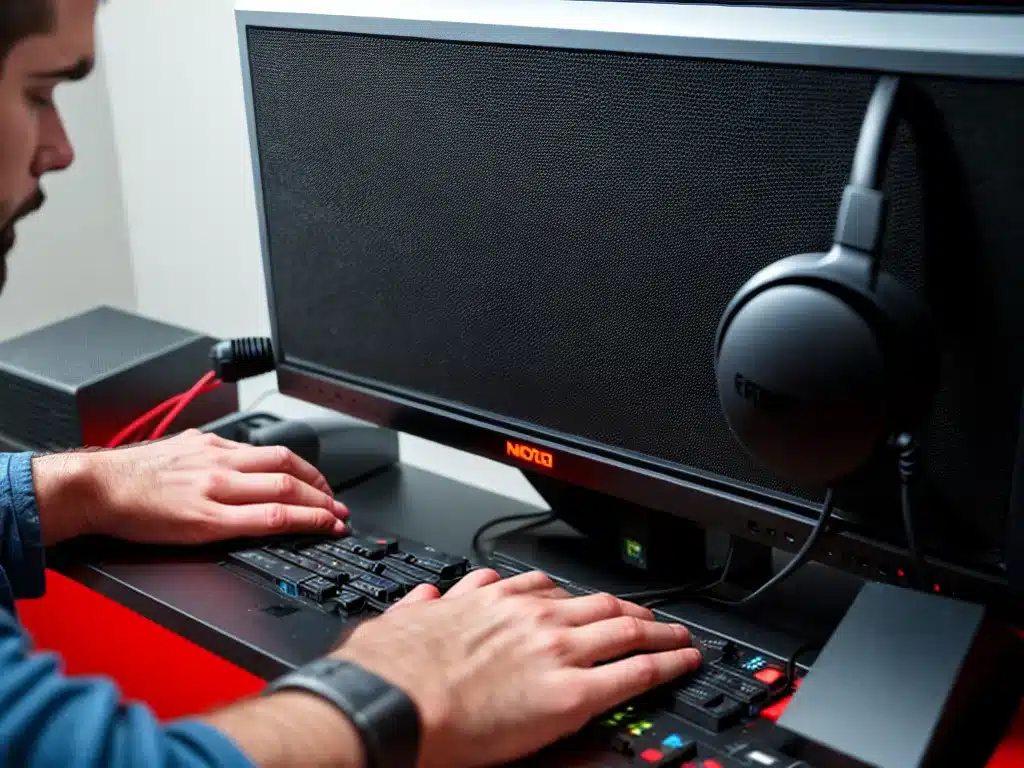

No Sound on Your PC? 5 Methods to Fix Audio Issues Quickly
Having no sound on your PC can be extremely frustrating. As someone who relies on my computer for both work and entertainment, I know how vital it is to have proper audio functioning. When there’s no sound coming from your speakers or headphones, it significantly impacts your user experience.
Fortunately, most audio issues can be resolved relatively quickly if you know where to look and what to try. In this article, I’ll provide 5 proven methods to help you troubleshoot and fix common audio problems on your Windows PC.
1. Check Volume and Mute Settings
The first thing to check whenever you have no sound is the volume and mute settings. It’s easy to accidentally turn the volume all the way down or hit the mute button, which instantly cuts off the sound.
Follow these steps to verify the volume and mute settings:
-
Click the speaker icon in the bottom-right corner of the screen to open the volume slider.
-
Make sure the volume is turned up high enough to hear audio comfortably. Drag the slider to the right to increase volume.
-
Check if there is an X mark over the speaker icon. If so, click it to unmute your PC.
-
Also examine the volume mixers for specific apps and devices. Click the up arrow next to the volume icon to access these.
-
Try playing audio from an app or video to confirm you have sound.
If you still have no sound after checking these basic settings, it’s time to dig deeper.
2. Update or Reinstall Audio Drivers
The most common cause of sound issues is having outdated or corrupt audio drivers. Audio drivers allow your operating system to properly communicate with your speakers, headphones or other playback devices.
Follow these steps to update drivers:
-
Open Device Manager by right-clicking the Start button and selecting it.
-
Expand the Sound, video and game controllers category.
-
Right-click your audio device and select Update driver.
-
Click Search automatically for updated driver software to find the newest version.
-
If that doesn’t work, visit your device manufacturer’s website and download the latest driver manually.
-
As a last resort, uninstall the driver completely, reboot your PC, and reinstall the driver fresh. This often resolves driver corruption issues.
Updating drivers is the most effective way to restore lost audio and should always be one of the first troubleshooting steps you try.
3. Switch Sound Playback Devices
Another easy fix is to switch between sound playback devices like speakers, headphones, HDMI ports etc.
Follow these steps to change playback devices:
-
Right-click the volume icon and select Sounds (or Sound Settings).
-
Go to the Playback tab.
-
If you have multiple devices listed, try setting each one as Default Device and test for sound.
-
Make sure the correct device is enabled and not disabled. Some devices may also have their own volume and mute controls here.
-
If you recently unplugged headphones for example, the system may still be routing audio to that output. Changing to speakers should resolve that issue quickly.
4. Disable Audio Enhancements
Certain built-in audio enhancements like virtual surround sound may end up reducing volume, causing distortion or blocking sound entirely in some instances.
Disabling audio enhancements may help:
-
Go back to the Sounds control panel and select the Playback tab.
-
Select your audio device, click Properties then go to the Enhancements tab.
-
Uncheck any enabled enhancements like Equalizer or Virtual Surround.
-
Click OK and test sound again. Re-enabling enhancements that aren’t causing problems is fine.
5. Run Audio Troubleshooter
Windows includes a built-in audio troubleshooter that can automatically detect and fix common sound issues. Here’s how to run it:
-
Type Troubleshooting into the Windows search bar and open it.
-
Click on Playing Audio and then Run the Troubleshooter.
-
Follow the on-screen instructions as the troubleshooter goes through various checks to diagnose your problem.
-
Apply any recommended fixes it provides. This may update drivers, change default devices or make other system tweaks.
The troubleshooter can solve a wide variety of audio problems, often with just a single click. It’s a quick and easy way to resolve many sound issues.
Summary
With these 5 troubleshooting methods, you should be able to get your PC audio back up and running:
- Check volume and mute settings
- Update or reinstall audio drivers
- Switch playback devices
- Disable audio enhancements
- Run the Windows audio troubleshooter
Troubleshoot systematically through each solution, testing audio after each step. In most cases, you should be able to pinpoint and resolve the problem fairly quickly. Just don’t forget to turn up the volume so you can enjoy your tunes or videos again!
Let me know in the comments if you found these audio troubleshooting tips helpful or if you resolved your no sound issues another way!












